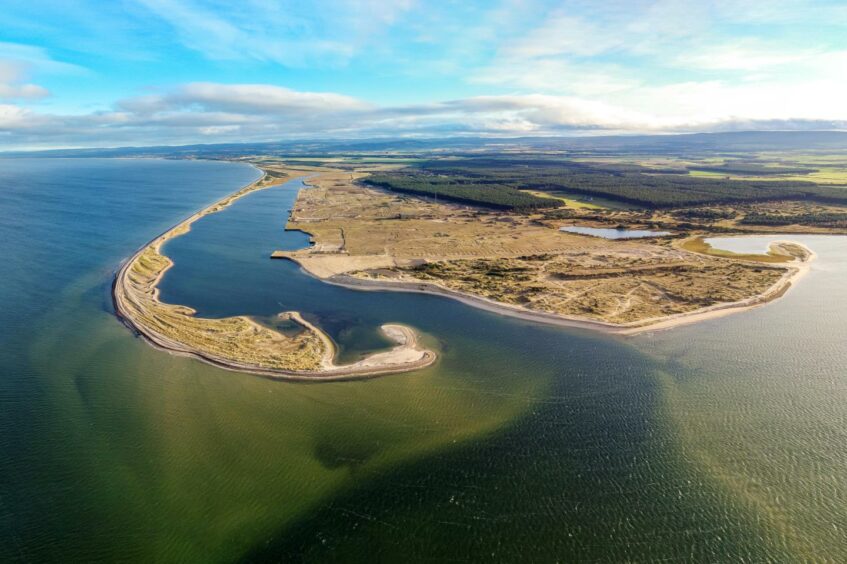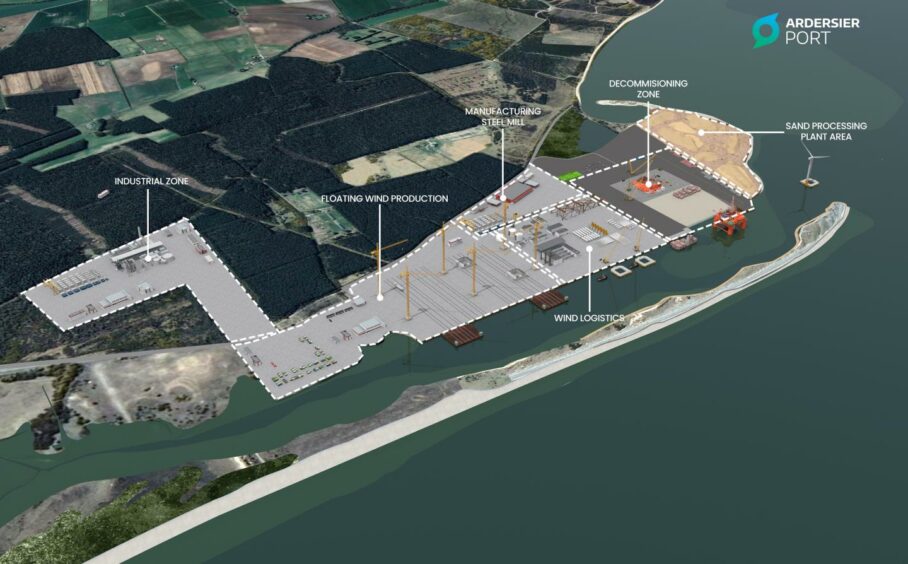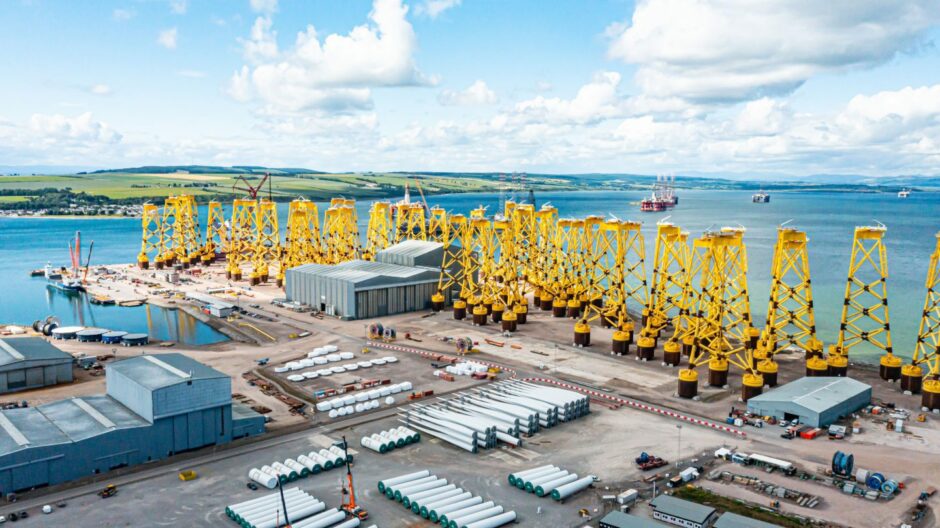
The new chief exec of Ardersier Port owner Haventus is optimistic that major investment in the site will set it up for a leading and century-long role in the energy transition.
It’s a “really fantastic opportunity” for Lewis Gillies – who originally hails from Shawbost on the Isle of Lewis – and one he hopes will ensure a lasting legacy for the Highlands and Islands.
US private equity firm Quantum Energy officially named the former BP executive as the man to helm the redevelopment of the site earlier this week, alongside a commitment to invest £300 million into the former McDermott yard in a bid to transform it into a “major energy transition facility”.
It’s an exciting homecoming for Mr Gillies, who returned to the area last summer having worked largely in the US in recent years.
“I’ve managed to find opportunities to work in many corners of the world, but I’ve not thus far found an opportunity to work in the Highlands and Islands,” he told Energy Voice. “This gives me the opportunity to deploy my experiences and skills that I’ve garnered around the world over the last 30-plus years back where I came from.”
Plans at the port include establishing a 2km long quayside space and 450 acres of marshalling, assembly and operations area to provide capacity and services for both the offshore wind sector and North Sea decommissioning.
Mr Gillies said the development would support thousands of jobs in the construction phase and hundreds once operational – setting the site up for long-term sustainability in a way that the first North Sea oil boom did not necessarily deliver.
“What I would like to do is set this up so that this has got a 100-year timeline, not a 30-year timeline like it had last time round when it was used as a fab port,” he said.
Ahead of its time
Mr Gillies spent 20 years at BP, a stint that included playing a founding role in its then-alternative energy division, as well as serving as CEO of its Rio Tinto joint venture Hydrogen Energy International. After leaving the company in 2010, he helped develop plans for the original Peterhead carbon capture and storage (CCS) project which was later cancelled in 2015.
“It was a super successful, super exciting time. Very quickly we were investing billions and moving towards an energy transition before energy transition was a thing,” he says of his roles within the supermajor.
Despite the failure to reach fruition with CCS projects – possibly they were “ahead of their political time” he suggests – he is sanguine on their lasting impact on the wider conversation around decarbonisation.
“They had a huge impact in actually starting to build momentum around the energy transition even though they never actually occurred,” he added.
“The subsequent competitions in the UK to actually deploy CCS have benefited from the efforts of those projects.
“But the UK has to get real around CCS now. At one point we could have been the world leader – now there are numerous projects in all stages of development and deployment and operation all around the world.”
Yet with £20bn in government funding now earmarked for cluster projects around the UK, it’s clear the technology is now coming of age.
“I wish the proponents of all of those projects the absolute best of luck – I’m rooting for every single one of them” he says.
Floating wind bottlenecks
Meanwhile, the scale of ambition at Ardersier – both in terms of capital and infrastructure – is significant. Quantum’s commitment represents “a huge foreign investment in the Highlands” according to Mr Gillies, with the £300m equivalent to about 10% of all private equity invested in Scotland last year.
Its backers also hope to go some way towards addressing the pressing need for port assets capable of dealing with the 28GW of offshore wind projects secured in last year’s ScotWind leasing round – and the promise of Scotland’s place at forefront of a world-leading supply chain for floating wind.
“The acute bottleneck in that entire value chain is marshalling space – big areas behind quaysides – and Ardersier is exactly that,” he said.
A newly granted 28,500 tonne waste management licence also opens space at the port to the North Sea’s growing demand for decommissioning capability – a sector where the UK has previously lost out to rivals across the water in Denmark and Norway.
“I absolutely believe it can compete,” says Mr Gillies.
“It’s critically important that as a country we have the ability to deal with these aged assets in the North Sea domestically. We cannot continue to ship our problems overseas forever.
“We need to find that we have the ability to deal with them nationally and locally, and I believe that we can do absolutely do that in an economically competitive way.”
Promising a “bespoke facility” for decom work at Ardersier, he said the business would look to rapidly form “structural, strategic relationships” with UK players to ensure it can meet their needs in the coming years.
Ports as ‘national strategic asset’
In the near term, Haventus is recruiting a senior leadership team and commercial managers to help drive work at the site. Mr Gillies is hopeful this will enable work to begin on a new quay wall in the coming months, with a view to opening the first 600m of quayside next summer.
The team will also drive ambitions beyond Ardersier; he says the group is “actively looking at some other opportunities” for energy transition investments across the UK and further afield.
For now however, one of the first items on his to-do list includes extending “a hand of friendship” to the nearby Nigg and Cromarty ports. Though Ardersier is not within the recently announced green freeport zone, he says success in floating wind could invite many more hundreds of millions reinvested in and around the area.
“I want us to progress this project together as a national asset, because I think it has huge strategic value for the UK.
“I see us as a cluster solution in the short and medium term for sure, so I would like to find a way to make that possible – because if we’re working together then everywhere else becomes the competition.”
Recommended for you

 © Supplied by Ardersier Port
© Supplied by Ardersier Port © Supplied by SSE Renewables
© Supplied by SSE Renewables